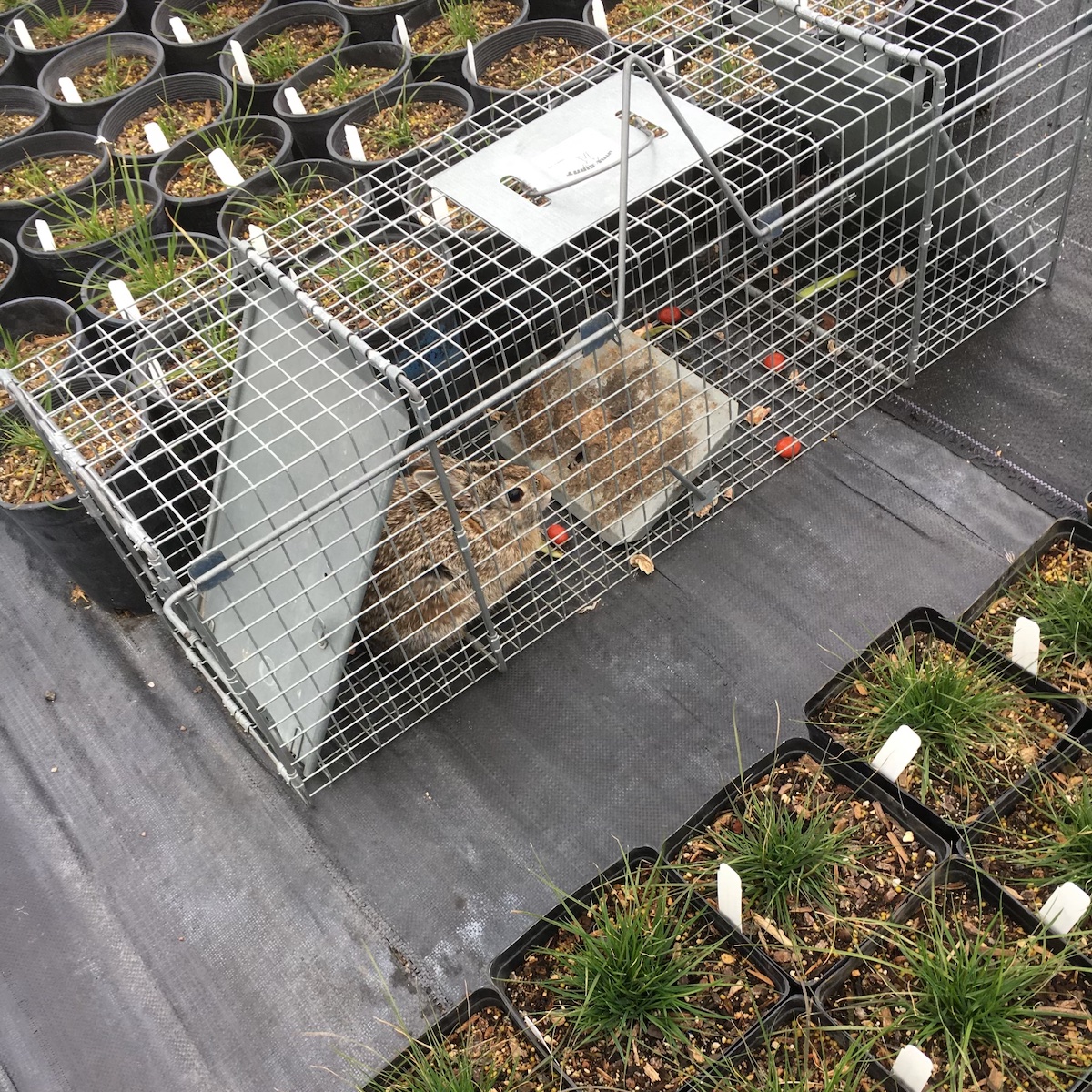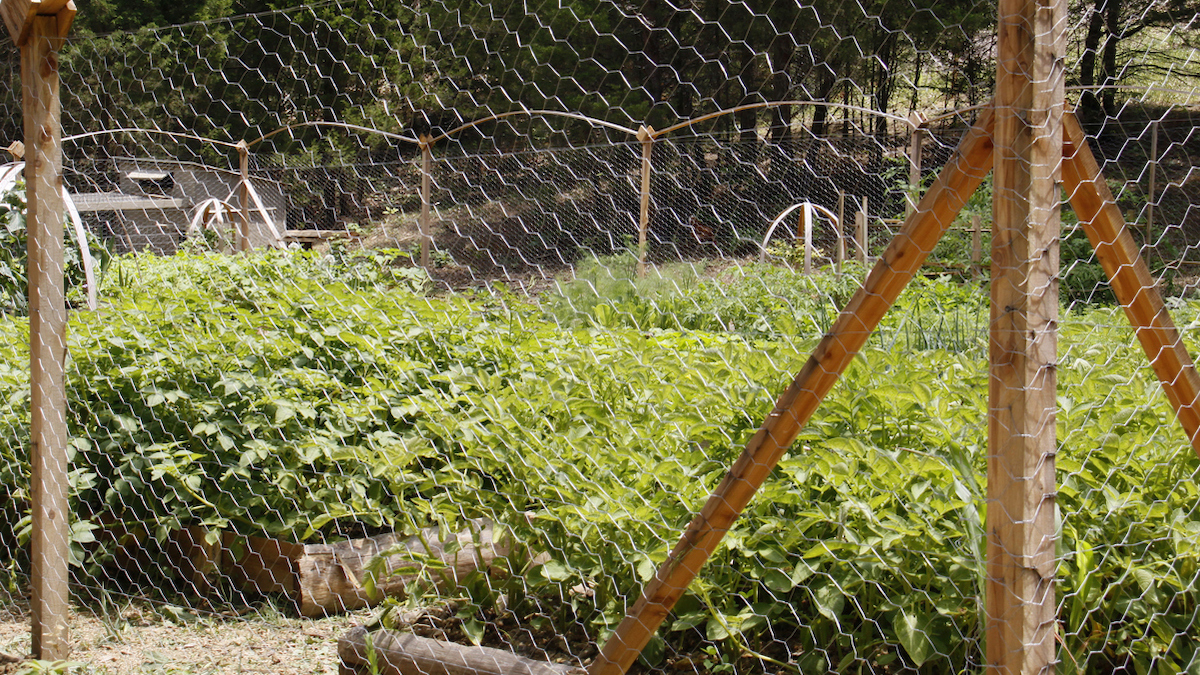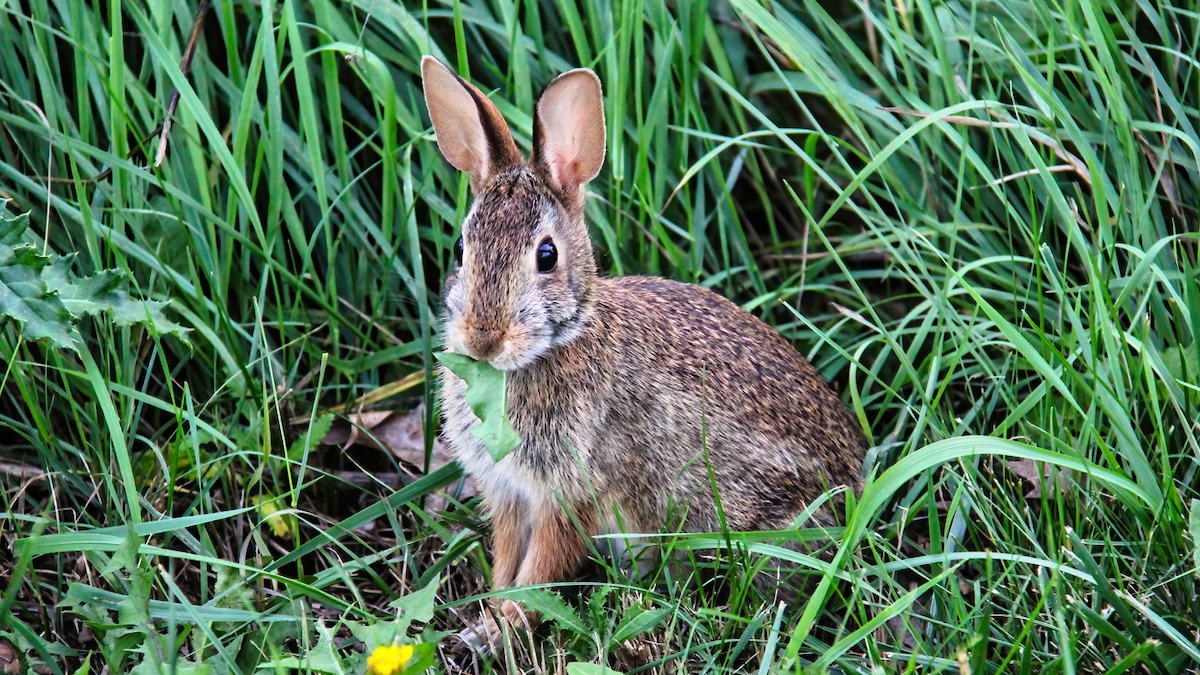
On our homestead, we strive to create a flourishing ecosystem that supports wildlife, as well as our family. Most of our yard is filled with vegetables, fruit trees, and mushroom logs, but we also have a large pollinator garden and a brush pile in our food forest that provide habitat for native insects and small mammals.
We rejoice in seeing rabbits eating grass and clover in our yard, but we also have systems in place to keep them from eating the vegetables that feed us. Some gardeners use cover scents like hot peppers and vinegar or even ready-made repellants as prevention methods, but in our experience there are much better ways to deal with rabbits that don't involve spraying down your food. Scent deterrents can alter the taste of your vegetables and fade before you have a chance to reapply, allowing rabbits free range on your garden.
How Rabbits Damage Gardens
If the tender greens of your spring garden are suddenly cut short, there’s a good chance you may have rabbits. To identify if bunnies are the culprits, look for clean-cut damage to plants. Other pests and insects will leave jagged edges or torn leaves, but plant damage from rabbits’ sharp teeth will be chopped off with precision. They will likely also leave tracks and pellets behind them after pilfering your homegrown produce.

Use a Fence to Keep Rabbits Out
There really is no better method for keeping rabbits out of your vegetable garden than a physical barrier. Metal chicken wire, which is sold in long rolls at most garden centers, is an excellent long-term solution for a rabbit problem. The chicken wire needs to be at least 2 feet tall to discourage the rabbits from simply jumping over it. I’ve seen rabbits squirm through some very small cracks in a fence, so make sure the bottom of the chicken wire is flush with the ground all the way around your garden. If you want to be extra careful you can even dig a little trench around the garden and bury part of the chicken wire to head off any tunnel attempts.
Use wooden stakes every 5 to 6 feet to maintain the structure of your chicken wire. You can either staple it or zip tie it at the top and bottom of the stake to hold it straight. If you are unable to step over the wire to access your garden you can cut a gate into it, but make sure to carefully fold over the cut ends of the chicken wire because they can be very sharp. A good method for making a gate is to staple the two ends of the chicken wire roll to stakes that are right next to one another and held together with a rubber band. Then when you need to get into the garden you can remove the rubber band and pull them apart.

Use Raised Beds
Like most animals, rabbits prefer to take the path of least resistance to their food source. We grow the majority of our leafy greens and brassicas in raised beds, but we also intersperse them throughout our pollinator gardens and around our fruit trees. In our experience, rabbits and other small mammals are much more likely to go after veggies that are spread around the yard rather than jumping into a raised bed that they can’t see the top of. Using raised beds in combination with a couple feet of chicken wire guarantees that your garden will be free of rabbits.
Plant Natural Food Sources for Repelling Rabbits
In the wild, one of the cottontail rabbit’s primary food sources is fresh grass. They also use tall grass as cover to avoid the detection of predators. Many people keep their grass cut so low that rabbits have very little to eat and they are completely exposed when trying to browse so they often avoid it altogether. It may seem counterintuitive to create rabbit habitat to keep them out of your garden, but removing their natural habitat just means that you’ll have rabbits eating flowers and vegetables instead of browsing on grass.
We like to keep a few areas of our yard untamed by allowing native grasses and other browse to grow naturally. Because our vegetable garden is out in the open in full sunlight, the rabbits would actually be more exposed to the many red-tailed hawks in our neighborhood if they decided to go after our spinach. When we do see rabbits in the yard, they are almost always eating the fresh grass or spending time in the cover.

Dogs as Rabbit Deterrent
As has been well documented, the presence of predators has a strong impact on the behavior of prey animals like rabbits. Our pitbull mix, “Little Moo,” has come very close to snagging adult rabbits in our garden on a number of occasions and in every case, the rabbits steered clear of our yard for weeks after their encounter with her. As you might imagine, one downside of this method is that dogs are generally not very cognizant of the gentle nature of a vegetable garden when they tear down on a rabbit. This method often results in a bit of collateral damage so keep that in mind before you sic your dog on the neighborhood rabbits.
Rabbit Stew
If you try all of the above and somehow still have rabbits eating your vegetables, I recommend giving Danielle’s Moroccan Braised Rabbit recipe a try. Rabbits are very prolific breeders and can repopulate an area quickly, but knocking back their population over the hunting season will help bring some relief the following spring. And in a way, you’re also recovering some of the food that you lost over the growing season in the form of rabbit meat.








